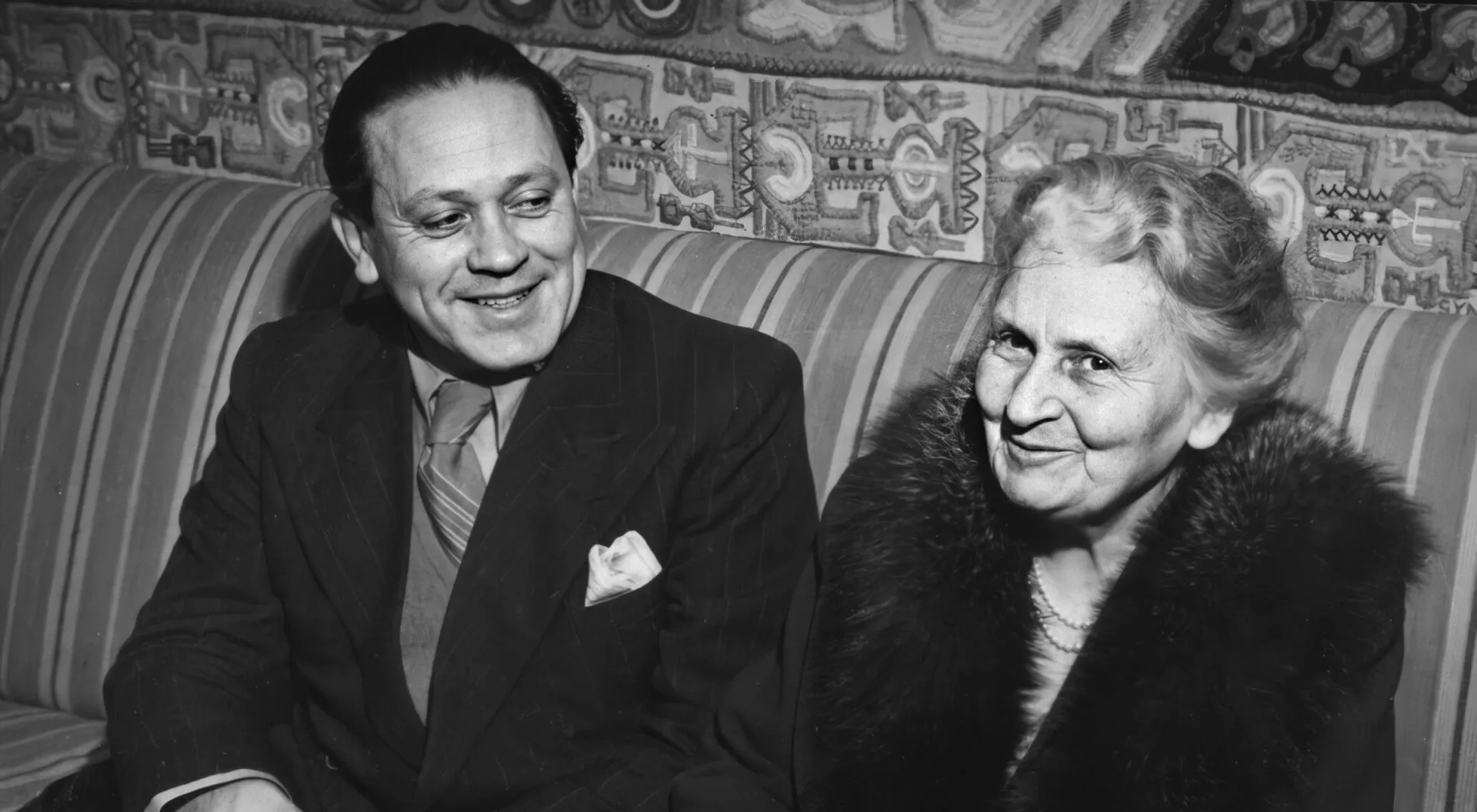
The story of Mario Montessori
While his father, Giuseppe, supported Mario's education and vacations, Mario had no idea that the woman who visited him regularly was actually his mother. It wasn’t until 1913, after the death of his maternal grandmother, that Maria Montessori revealed to Mario that she was his mother. For a while longer, to the outside world, he remained known as her nephew or adopted son.
In 1917, Mario accompanied his mother on a trip to the United States, where he met and married Helen Christy in San Francisco at the young age of 18.
Together, they opened a well-known Montessori school in Hollywood, which attracted the children of movie stars like Mary Pickford and Douglas Fairbanks. The couple then moved to Barcelona in 1918, where they lived with Maria Montessori. Mario and Helen had four children: Marilena, Mario Jr., Rolando, and Renilde. After their divorce in 1936, Mario took on the responsibility of raising the children.
Between 1939 and 1946, during World War II, Mario traveled to India with his mother. While there, he translated her series of courses into English, known as the Indian Montessori Training Courses. Together, they trained over a thousand Indian teachers in the Montessori method, leaving a lasting impact on education in the region.
Mario Montessori is well-known for contributing many ideas and creative elements to the elementary and cosmic education portions of the Montessori approach.
In 1952, after his mother’s passing, Mario took over as the director of the Association Montessori Internationale (AMI). Four years later, in 1956, he published The Human Tendencies and Montessori Education. His second wife, Ada Pierson, also dedicated her life to Montessori education and continued his work after his death in 1982. The Montessori-Pierson Publishing Company still publishes Maria Montessori’s work today, ensuring their legacy lives on.